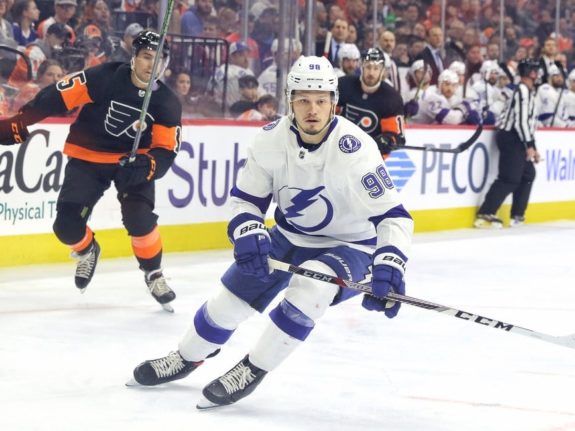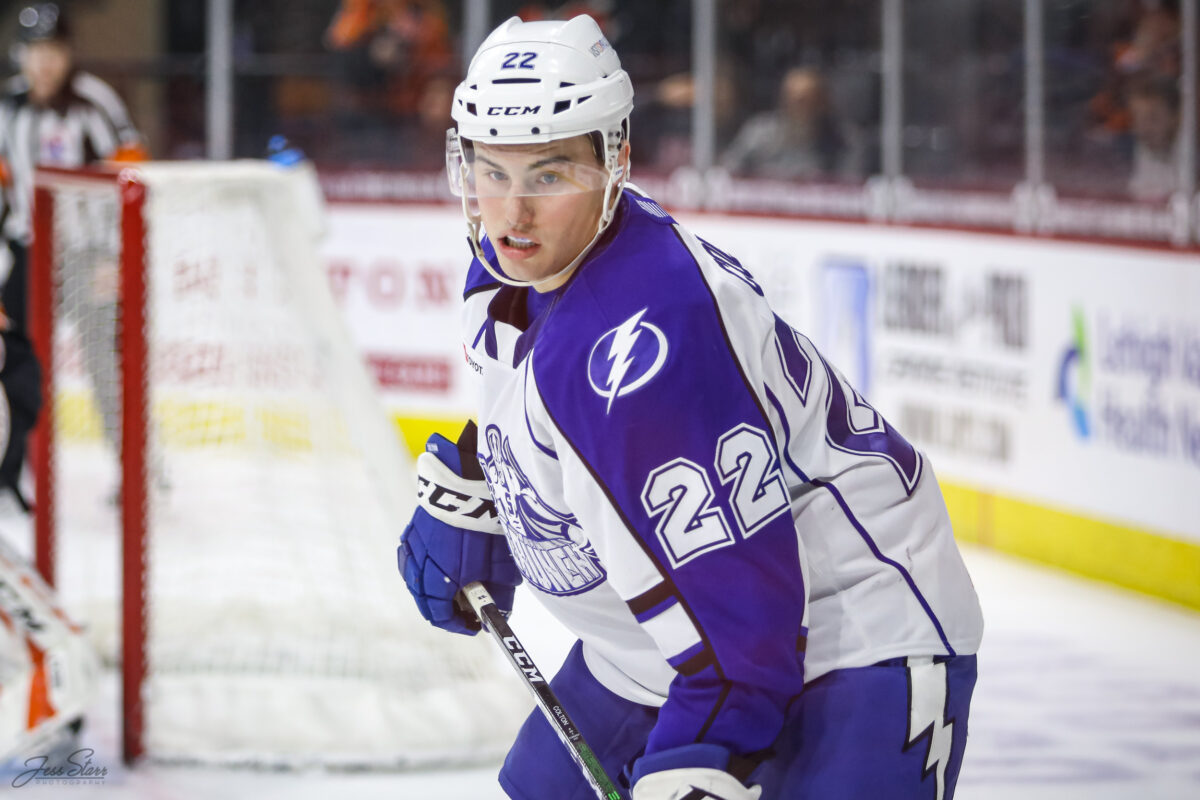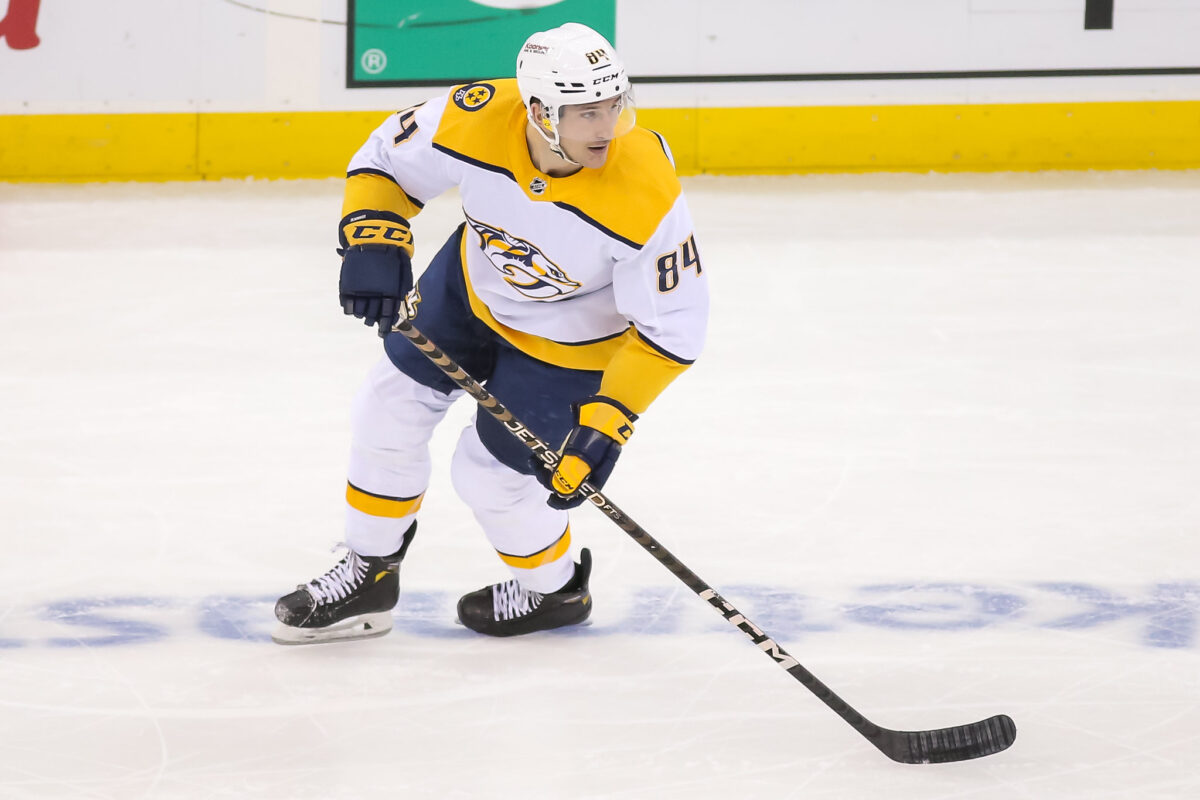The Hockey Writers’ Logan Horn recently released updated rankings for the NHL’s best farm systems. Coming as no surprise, the Tampa Bay Lightning were ranked 30th of 32 NHL teams. Horn is not alone in his rankings, as just about every outlet that does this kind of rankings has the Lightning ranked toward the bottom. It is not surprising that the Lightning have been trading draft picks to continue making deep runs in the playoffs, resulting in four Stanley Cup Final appearances and two Cup titles within the last ten years.
While the Lightning have built a solid core of players around top picks like Steven Stamkos, Nikita Kucherov, Victor Hedman, and Andrei Vasilevskiy, they have also been forced to trade other highly selected players, as well as future draft picks, to keep a talented roster that is capable of making deep playoff runs for many seasons. In 2018, they traded 2011 first-round pick Vladislav Namestnikov, 2016 first-round pick Brett Howden, and second-round pick Libor Hajek, along with two first-round draft picks to the New York Rangers for Ryan McDonagh and J.T. Miller. While Miller was dealt to the Vancouver Canucks the following season, McDonagh helped anchor a Lightning defense that won those back-to-back Stanley Cup titles.
The Lightning’s philosophy under general manager (GM) Julien BriseBois is that while he currently has top-level talent on the roster, his trading draft picks and leaving their prospect pool a little shallow reflects a philosophy of winning now, something he mentioned after trading for Tanner Jeannot in 2023. “I know what the odds are of those picks turning into players. I also know the odds of those picks turning into players that can help us win while we have this group of players right now in their prime ready to go for another long run — the odds of that are zero.”
Alternatives to Stockpiling Prospects
The Lightning have made several other trades during BriseBois’s tenure that have paid dividends. In February 2020, they acquired Blake Coleman from the New Jersey Devils for 2019 first-round pick Nolan Foote. While Foote’s future may be promising for the Devils, Coleman was another key player in helping the Lightning win two Stanley Cups. BriseBois’ philosophy also followed a pattern set by former GM Steve Yzerman, who raised a few eyebrows in June 2017 when he acquired Mikhail Sergachev from the Montreal Canadiens for former Lightning first-round pick Jonathan Drouin.

Another trend that may continue into future seasons is signing free agents from Europe. In June 2023, the Lightning signed Finnish forward Waltteri Merela and Norwegian defenseman Emil Lilleberg. The move did not receive much attention, as the thought was that the two would probably spend at least one season with Syracuse in the American Hockey League (AHL). However, recent injuries have allowed the pair to make the most of their recent call-ups. Both players have played well in helping the Lightning win eight of their last nine games, drawing praise from their GM. “If we go back, less than a year ago, Emil Lilleberg and Waltteri Merela weren’t part of our organization,” BriseBois said. “And now they’re two of our best prospects, two of our best young players.”
Sign up for our NHL Prospects & Draft Substack newsletter
Brisebois also praised the organization’s European scouts, such as Jamie Pushor, assistant GM and director of player personnel, and John Rosso, and has pointed out how valuable the entire Lightning scouting department has been in helping them keep a solid pipeline of young players without the benefit of high draft picks.
Player Development in Syracuse
Since their partnership started in 2012, the Lightning have had 24 Crunch alumni win a Stanley Cup with the franchise. While some of these players were part of the expanded rosters during COVID-19, many in this group consist of vital Lightning members such as Anthony Cirelli, Brayden Point, Ross Colton, Nikita Kucherov, and Andrei Vasilevskiy. It is one thing to draft and sign a talented prospect; it is another to ensure their skills reach the level that allows the young players to have productive NHL careers.

Colton is one of the examples of the Lightning scouting system that leads to finding mid-round gems. He was a fourth-round selection in 2016, but to date, he has better NHL numbers than those taken in front of him, including first-round pick Brett Howden and second-rounders Boris Katchouk and Taylor Raddysh. His development can be directly tied to his time in Syracuse, as is the case for third-round picks Cirelli and Point. The Lightning-Crunch partnership has successfully developed under-the-radar prospects for the organization.
A Long-Term Plan
Unless something changes, this method of acquiring talent will need to continue due to the trades that saw Brandon Hagel and Tanner Jeannot added to the team at the last two trade deadlines. Currently, the Lightning do not have first or second-round draft picks in 2024 and is without a first-round pick in 2025. Without these picks, they will be forced to find other ways to add talent to the organization.

This year’s trade deadline should be interesting for the Lightning. Without high draft picks to trade away, they do not have much to offer in acquiring top talent. Because the team will face salary cap issues next season, they may trade away some veterans to free up cap space. The other possibility is that the eight players who made their NHL debuts recently may also be on the trade block.
Related: Lightning Cruise Into All-Star Break With Strong Stretch
Long-term success in the NHL sometimes comes at a price. In the case of the Lightning, their recent playoff success has left them without many high-draft picks, which has resulted in the organization having fewer high-level prospects than most other teams in the NHL. However, they have continued to find alternatives that have allowed them to consistently qualify for the playoffs while acquiring prospects that have value to the organization.
